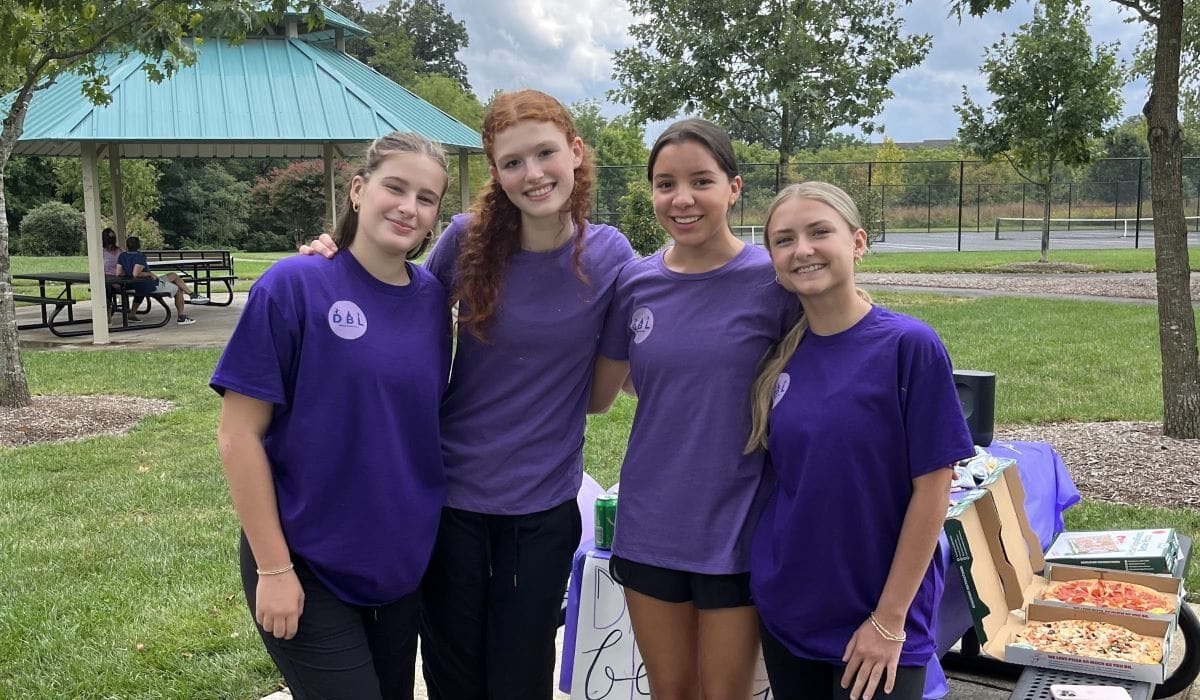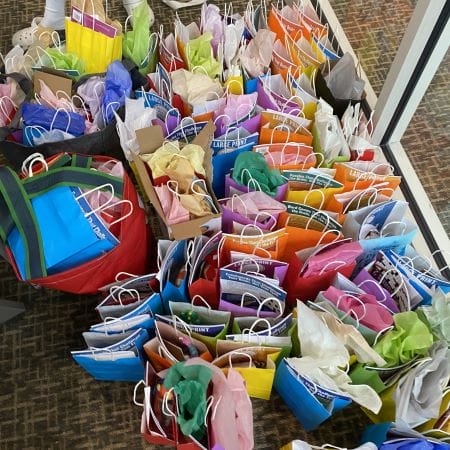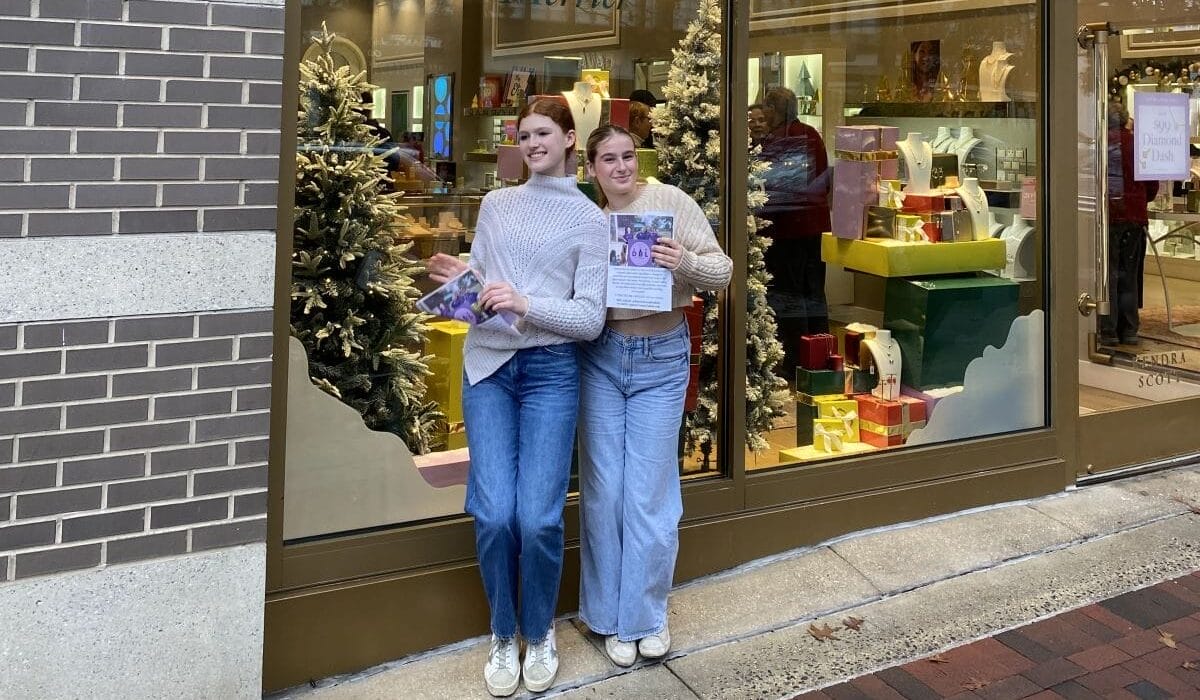Teen Pushes Body Positivity Movement Forward in Dance Industry

Meet Daily Point of Light Award honoree Anya Kleinman. Read her story, and nominate an outstanding volunteer or family as a Daily Point of Light.
If asked to picture a dancer, most people would have a similar image in mind — a body type often reinforced by instructors pointing to examples of success. As Anya Kleinman, 16, has experienced firsthand, it creates pressure that young dancers like herself internalize. And sadly, it’s something that often leads to eating disorders.
Anya is a self-described political nerd who, despite being too young to vote, enthusiastically volunteers for campaigns. She has two brothers, three cats and a not-so-austere dog named Margaret Thatcher. She’s a few practice hours short of getting her driver’s license and is, in many ways, a typical high schooler.
But Anya’s biggest passion lies with dance, an art she has been competitive in from ages 9 to 15 and now does pre-professionally with a focus on ballet. After discovering the prevalence of peers who had similarly struggled with body image issues, she and a friend created Dancers Beyond Labels to help dancers stay healthy while doing what they love and to change the way the industry talks about bodies.
What inspires you to volunteer?
When I was 13, I developed an eating disorder, which changed my relationship to dance and was a hindrance to my mental health, performance and interactions with fellow dancers. When I started recovery, I began talking to friends on my dance team and realized that they had gone through similar issues. We went through it individually and thought we were isolated in that experience, but it turns out we could all resonate. I started Dancers Beyond Labels to work with instructors and dancers to figure out how we can address the eating disorder crisis and to build community.

Tell us about your volunteer role with Dancers Beyond Labels.
As president, I work with our executive team of about 20 high school students across the US—and recently, Brazil—on a daily basis to come up with ideas for monthly events and fundraisers with different goals. Sometimes, we host a webinar with a nutritionist to strengthen community, education and awareness. Sometimes, we’ll do fundraisers. We’ve raised over $5,000 for eating disorder awareness programs. A couple of months ago, we did a walk-a-thon to raise funds for care packages to give dancers in eating disorder treatment. We’ve delivered more than 200 care packages and 5,000 letters to dancers in recovery.
We’re currently creating a Studio Snack Program. We want to work with nutritionists within our area to create holistic, nutritional snack packages for dancers that will be kept in studios. We’ve also made concerted efforts to create a nutrition curriculum by partnering with a collective of therapists and dietitians. Simultaneously, we’re working with a professor at the University of Albany to survey instructors about what areas of nutritional knowledge are lacking. For example, do you know how to approach a dancer if they’re struggling with an eating disorder? And, do you know the warning signs of bulimia? Based on that information, we’ll adjust our curriculum.
We want to pilot that program in a group of studios. If that goes well, we want our experts to present it to dance instructors at conventions.
Do you focus on a specific age range?
We focus on ages 12 to 18. Empirically, that’s when these issues start to emerge. They also tend to be the dancers most active competitively, which is our area of focus right now.
You grew your executive team to 20 people and have over 300 volunteers across the world. Tell us about that growth process.
I initially developed the idea with one of my close dance friends, Kendall, who also experienced this issue. Almost immediately after releasing information about volunteer opportunities and projects we wanted to implement, tons of dancers that we knew applied for our executive team or to volunteer for events. Then, we started posting on TikTok. I’ve had dancers reach out to me from New York and Seattle to say, “I am recovering from an eating disorder, and I want to start a chapter.” Social media marketing and virtual events made us accessible to a broader group of people and has grown our studio network.
We’ve partnered with more than 20 studios across the country, and now internationally, to implement a body image code of conduct. We send them a poster with a QR code that links to the code we developed in partnership with nutritionists that encompasses things like in-class language usage and healthy eating habits. Instructors commit to talking about body image in a healthy and progressive way.

What are your other long-term plans or goals for the organization?
The dream would be to pilot our nutrition curriculum at a convention in D.C. or in the Maryland/Virginia area. Dance instructors have a lot of responsibility. They’re figures of authority that play a key role in a dancer’s upbringing and education as an artist. We also want to create an advisory board with some professional dancers, because I think their guidance could be really valuable.
What else have you learned through your experiences as a volunteer?
We can move forward as an industry. We’ve already started to see it. Slowly but surely, there has been a broad message of acceptance and positivity start to infiltrate the industry.
What do you want people to learn from your story?
Dance has been painted as an art form for which you have to look a certain way to be a successful performer. That’s not true at all. Not all bodies are the same, and they shouldn’t have to all fit into society’s mold for what a dancer “should” look like.
You can make real change, even if you’re doing it on a small level. You can do things that are sometimes thought to be reserved for adults. I never thought I’d be working with a collective of therapists and dieticians as a high school student. And recovery is possible for eating disorders at large, even if you’re not a dancer. Recovery is absolutely possible.
Do you want to make a difference in your community like Anya? Find local volunteer opportunities.
